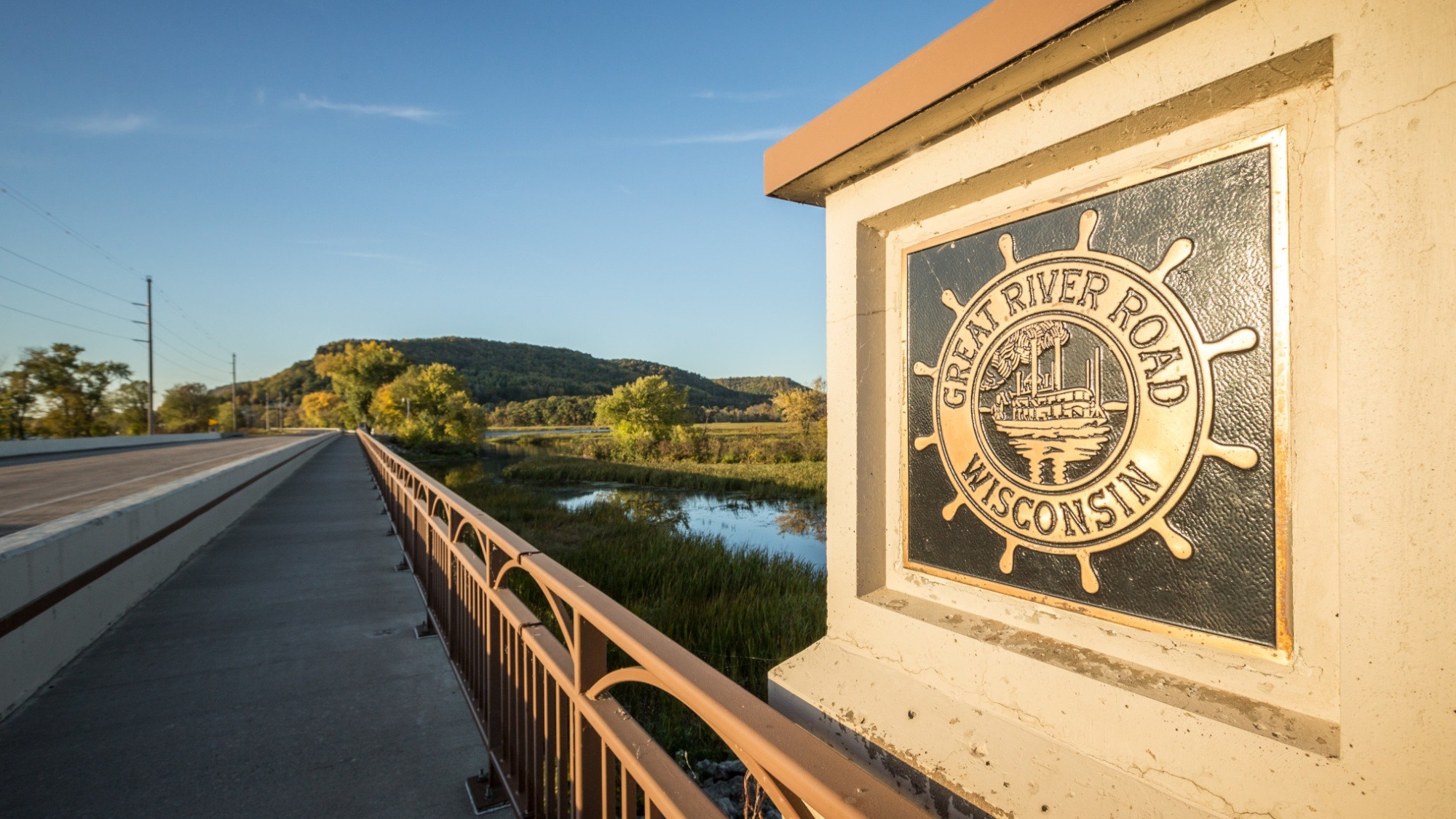A trip along the Great River Road means not only great scenery, fantastic food, and engaging history—it means a chance to discover some of the unique attractions that travelers can find along the route. Here’s a closer look at a few places to visit along the northern stretch of the byway.
Minnesota
Head to Bemidji—“the first city on the Mississippi”—to find a larger-than-life (or maybe not) statue of two Northwoods legends. Paul Bunyan and Babe the Blue Ox have a long, storied history dating to the lumberjack camps of the early 20th century, and visitors to Bemidji will find giant statues of the famed duo outside the Tourist Information Center, 300 Bemidji Ave. The center is open year-round and features Paul Bunyan memorabilia as well as information about local attractions.
The Big Fish Supper Club and Resort, located just east of Bemidji on U.S. Highway 2, certainly lives up to its name. Visitors who pull up to this iconic roadside attraction between Leech Lake and Lake Winnibigoshish will be greeted by a giant musky, its mouth open wide.
Wisconsin
The “big fish” theme continues in Wisconsin, with several communities along that state’s section of the Great River Road boasting oversized aquatic creatures. Trempealeau, which is home to an annual Catfish Days celebration every July, has a giant catfish on its welcome sign along Highway 35, and Onalaska (about 15 miles to the south) has its own aquatic icon: Sunny the Sunfish, who overlooks Lake Onalaska from a roadside park.
Further south in Dickeyville, just north of the Wisconsin-Illinois border, road trippers will find the Dickeyville Grotto, a unique stone creation on the Holy Ghost Parish grounds. Father Matthias Wernerus served at the parish from 1918 to 1931 and crafted the grotto and shrines, which consist of stone and mortar and are adorned with an array of unique objects, from colored glass and gems to seashells and petrified wood.
Iowa
Visitors to the city of Burlington in southeastern Iowa will find one of America’s crookedest streets in the heart of downtown. Snake Alley, initially built in the 1890s to connect the residential district at the top of the bluff with the commercial district below, consists of five half-curves and two quarter-curves, covering 275 feet and rising nearly 60 feet along a 21% grade.
Another short route that’s worth the ride is Dubuque’s Fenelon Place Elevator, which was also built to solve the problem of getting from the homes at the top of the bluffs to the businesses below and vice versa. The Fenelon Place Elevator is billed as the shortest and steepest railroad in the world, traveling just shy of 300 feet from street level to the top off the bluff. The elevator is open from April 1 through November 30 and costs $4 round-trip for adults and $2 round-trip for children 5-12.
Illinois
Great River Road travelers might not know they’re passing a UNESCO World Heritage site when they drive through Collinsville in northwestern Illinois, but nearby Cahokia Mounds has had the notable distinction since 1982. Cahokia Mounds was home to the largest pre-Columbian settlement north of Mexico and was occupied between approximately 800-1400, with a population of 10,000 to 20,000 residents at its peak in the 11th and 12th centuries. Today, visitors can see Monks Mound, the largest prehistoric earthwork in the Americas, which rises more than 90 feet over the surrounding landscape.
Motorists along Route 100 near Alton could find themselves face-to-face with a mythological beast. On the bluffs above the Mississippi River in southwestern Illinois, visitors can discover a painting of the Piasa bird, a feared creature among the Illini Native Americans who inhabited the area. First seen by Jacque Marquette in his voyage down the river in 1673, the Piasa (pronounced pie-uh-saw) bird was repainted on the bluffs in the 1990s and greets Great River Road travelers today.
Missouri
Learn about the life of one of America’s most famous authors in the city of Hannibal in northeastern Missouri. Mark Twain called Hannibal home in his youth, and inspired many of his later tales, including serving as the setting for Tom Sawyer’s adventures. Today, visitors can stroll the historic downtown and visit the Mark Twain Boyhood Home and Museum to learn about the writer’s early life and his experiences in Hannibal, tour the Mark Twain Cave Complex (where the outlaw Jesse James once hid out), and celebrate events like the Twain on Main Festival and National Tom Sawyer Days.
It wouldn’t be a legitimate list of roadside attractions without a “world’s largest” something, so head to Cape Girardeau in southeastern Missouri to find the World’s Largest Fountain Drink Cup outside the Rhodes Convenience Store on Mt. Auburn Road just off Interstate 55. The giant cup stands more than 13 feet high and holds more than 4,700 gallons.
Photo: Travel Wisconsin








